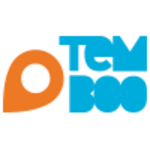Description

Blynk

Bridgera IoT
Comprehensive Overview: Blynk vs Bridgera IoT
Blynk and Bridgera IoT are both players in the Internet of Things (IoT) ecosystem, offering distinct solutions to a variety of markets. Here's a detailed overview of each, addressing the specified aspects:
Blynk
a) Primary Functions and Target Markets:
-
Primary Functions: Blynk is an IoT platform designed to enable developers to build web and mobile applications for the Internet of Things. It provides a suite of tools that allow users to connect various hardware models (like sensors and other IoT devices) to the cloud and create mobile and web interfaces for controlling and monitoring these devices. This is achieved through its user-friendly app builder and a wide range of customizable widgets.
-
Target Markets: Blynk primarily targets DIY enthusiasts, educational institutions, startups, and small to medium-sized businesses. It's particularly popular among makers and hobbyists due to its ease of use and comprehensive documentation.
b) Market Share and User Base:
-
Market Share: While specific market share data can be hard to pin down, Blynk is widely recognized within the IoT developer and maker communities and enjoys a significant presence on platforms like GitHub.
-
User Base: Blynk is known for having a large and active user base, with millions of developers and companies leveraging its tools for IoT projects. Its community-driven approach, with extensive online resources and forums, aids in maintaining its popularity.
c) Key Differentiating Factors:
-
Ease of Use: Blynk excels in its intuitive drag-and-drop interface, allowing non-programmers to develop IoT solutions quickly.
-
Focus on Prototyping and Development: Blynk's emphasis is on rapid prototyping, making it attractive for users who want to quickly iterate and test IoT solutions.
-
Extensive Widget Library: Offers a wide array of widgets to customize IoT dashboards, facilitating tailor-made solutions without deep coding expertise.
Bridgera IoT
a) Primary Functions and Target Markets:
-
Primary Functions: Bridgera IoT provides end-to-end IoT solutions that include device management, data analytics, and cloud computing services. It focuses on creating custom IoT applications tailored to specific business needs, often integrating with existing enterprise systems.
-
Target Markets: Bridgera IoT targets more mature businesses and enterprises needing bespoke IoT applications across various industries like healthcare, logistics, manufacturing, and smart cities.
b) Market Share and User Base:
-
Market Share: Bridgera IoT’s market share is more fragmented due to its focus on providing customized, enterprise-level solutions. It's recognized in niches where tailored IoT integration and system compatibility are critical.
-
User Base: The user base consists of enterprise clients looking for scalable IoT solutions that require integration with complex business processes and existing technology stacks.
c) Key Differentiating Factors:
-
Customization and Integration: Bridgera IoT's strength lies in its ability to provide highly customized solutions that are designed to integrate seamlessly with existing enterprise systems.
-
Data Analytics and Cloud Services: Emphasizes robust data analytics and offers fully managed cloud services, which are crucial for businesses that need to leverage IoT data for substantial operational improvements.
-
Focus on Enterprise Solutions: Unlike the broad appeal of Blynk, Bridgera IoT specializes in serving enterprise clients and providing them with end-to-end solutions tailored to their unique needs.
Comparison Summary
In summary, Blynk is more focused on DIY, education, and smaller businesses that benefit from its ease of use and rapid prototyping capabilities. It's an excellent choice for developers who are looking for a flexible, widget-based design experience. On the other hand, Bridgera IoT serves enterprise-level companies requiring custom solutions and integration with complex IT landscapes, positioning itself as a partner that provides not only the technology but also strategic IoT deployment.
Contact Info

Year founded :
2018
Not Available
Not Available
India
http://www.linkedin.com/company/blynk-elektrischvaren

Year founded :
Not Available
Not Available
Not Available
Not Available
Not Available
Feature Similarity Breakdown: Blynk, Bridgera IoT
Blynk and Bridgera IoT are platforms designed for Internet of Things (IoT) applications, offering various tools and services to help developers and businesses manage connected devices. Here's a breakdown of their feature similarities and differences:
a) Core Features in Common
-
Device Management: Both platforms provide capabilities to manage and monitor connected devices. This includes supporting a range of IoT protocols like MQTT, HTTP, and others.
-
Data Visualization: They offer dashboards to visualize data collected from IoT devices. Users can access real-time data and historical trends.
-
Cloud Connectivity: Both platforms provide cloud services to store, process, and analyze the data collected from IoT devices.
-
Mobile and Web Access: They allow users to access their dashboards and manage devices through web interfaces and mobile apps.
-
APIs and SDKs: Both Blynk and Bridgera IoT offer APIs and software development kits (SDKs) to integrate their services with other applications and systems.
-
Alerts and Notifications: They support real-time alerts and notifications based on predefined rules or triggers from IoT data.
b) User Interface Comparison
-
Blynk: Blynk is known for its highly customizable and user-friendly mobile app interface. It allows users to create drag-and-drop widgets, which makes it extremely user-friendly, especially for prototyping and DIY projects. The simplicity of Blynk’s interface is targeted towards non-engineers who require an easy way to visualize and control their IoT projects.
-
Bridgera IoT: Typically offers a more traditional dashboard experience with a focus on enterprise applications. It is tailored for businesses that may need more advanced data analytics and device management features within a corporate software infrastructure. The interface is comprehensive and integrated with more extensive reporting and analytics capabilities.
c) Unique Features
-
Blynk:
- Widget-Based Development: One of Blynk's standout features is its widget system, which allows users to effortlessly design custom dashboards using a drag-and-drop interface, suitable for rapid prototyping.
- Community and Open Source: Offers a strong community presence and has open-source components available, which encourages community contributions and provides flexibility in extending its functionality.
-
Bridgera IoT:
- Custom Solutions and Consulting: Bridgera often emphasizes custom software solutions and consulting services. They provide tailored IoT application development and end-to-end system-agnostic services, which are particularly appealing to enterprise clients looking for customized implementations.
- Robust Enterprise Integration: Known for its strong capabilities in integrating with existing enterprise systems. Bridgera excels in data integration and has a strong focus on business applications, providing intricate custom reporting, data processing, and analytics features specific to industry needs.
These platforms cater to different audience segments, with Blynk focusing more on simplicity and hobbyist or prototyping needs, while Bridgera IoT is aimed at providing comprehensive, enterprise-grade solutions.
Features

Not Available

Not Available
Best Fit Use Cases: Blynk, Bridgera IoT
Blynk and Bridgera IoT are platforms designed to facilitate the development and management of Internet of Things (IoT) solutions, but they cater to different needs and offer distinct features that make them suitable for various types of businesses and projects. Here's how they compare:
a) Best Fit Use Cases for Blynk:
Blynk is a popular choice for businesses or projects that require a user-friendly platform for prototyping, developing, and managing IoT applications quickly.
-
Startups and Small Businesses: Blynk is ideal for startups and small businesses that want to rapidly develop IoT solutions without needing extensive coding or infrastructure. It offers intuitive tools that make it easier to create and test IoT applications, making it a good option for businesses that may have limited technical resources.
-
DIY and Maker Projects: Blynk is particularly favored by hobbyists, makers, and engineers working on DIY projects. Its drag-and-drop interface simplifies the process of creating custom user interfaces for IoT devices, making it accessible for personal projects and educational purposes.
-
Rapid Prototyping: Companies looking to develop quick prototypes to test their IoT ideas will find Blynk beneficial. Its ability to provide a mobile app as a control interface out of the box enables rapid iterations and demonstrations.
-
Remote Monitoring and Control Solutions: Blynk is suitable for projects that involve remote device management, such as smart homes, industrial control systems, and connected consumer products, given its robust mobile app capabilities.
b) Preferred Scenarios for Bridgera IoT:
Bridgera IoT is a more comprehensive IoT platform aimed at businesses that require significant customization, scalability, and support for integrating complex and varied IoT ecosystems.
-
Enterprise-Level Deployments: Bridgera IoT is a choice for medium to large enterprises that need custom IoT solutions tailored to specific business models and processes. Its platform can handle large-scale implementations with sizable assets and data.
-
Industry-Specific Solutions: Bridgera specializes in providing solutions for specific industries such as healthcare, logistics, and field services. Its ability to cater to the nuanced needs of these industries makes it a preferred partner for businesses operating in these areas.
-
Complex IoT Ecosystems: Companies with an extensive range of connected devices and need to integrate various data sources will benefit from Bridgera's platform, which emphasizes customization and flexibility.
-
Advanced Data Management Needs: Bridgera IoT is well-suited for businesses that focus on data-driven decision-making, offering advanced analytics, real-time data processing, and comprehensive reporting tools.
d) Catering to Different Industry Verticals or Company Sizes:
-
Blynk:
- Industry Verticals: Home automation, consumer electronics, educational tools, and small-scale industrial applications.
- Company Sizes: Suitable for individuals, startups, and SMEs that need flexible, low-cost solutions that can be developed and deployed rapidly.
-
Bridgera IoT:
- Industry Verticals: Healthcare, logistics, manufacturing, energy, and other sectors requiring bespoke IoT systems.
- Company Sizes: Aimed at medium to large enterprises with dedicated budgets for IoT initiatives, requiring robust, scalable solutions with ongoing support.
Overall, Blynk is more suited for smaller-scale, rapid application development and maker projects, whereas Bridgera IoT is tailored for larger and more complex enterprise-grade solutions with specific industry requirements.
Pricing

Pricing Not Available

Pricing Not Available
Metrics History
Metrics History
Comparing undefined across companies
Conclusion & Final Verdict: Blynk vs Bridgera IoT
Conclusion and Final Verdict for Blynk vs. Bridgera IoT
When evaluating Blynk and Bridgera IoT, it's essential to consider factors such as cost, ease of use, customization, scalability, and support services. Each platform has its strengths and weaknesses, and the best choice often depends on the specific needs of the business.
a) Best Overall Value
Blynk generally offers the best overall value for startups and small to mid-sized projects due to its cost-effective pricing model and ease of deployment. It's notably user-friendly, with a strong emphasis on delivering an intuitive mobile app experience, which makes it an attractive choice for projects requiring rapid prototyping and deployment.
Bridgera IoT tends to deliver a robust solution for enterprises needing extensive customization, powerful analytics, and dedicated support. It often represents a higher upfront investment but provides significant long-term value for businesses seeking tailored solutions and integration with existing systems.
b) Pros and Cons of Each Product
Blynk:
- Pros:
- User-friendly and developer-centric with a low learning curve.
- Strong mobile app development tools and a variety of pre-built widgets.
- Highly customizable dashboard for different IoT applications.
- Cost-effective for small to medium-sized projects.
- Cons:
- May not scale as effectively for very large enterprise needs.
- Limited in terms of advanced analytics and large-scale data integration.
- Primarily focused on mobile app interfaces which might not suit all project needs.
Bridgera IoT:
-
Pros:
- Highly customizable and suitable for complex enterprise projects.
- Extensive data analytics and reporting capabilities.
- Dedicated support team offering personalized solutions.
- Ability to seamlessly integrate with complex IT infrastructures.
-
Cons:
- More expensive, especially for small-scale or pilot projects.
- Longer setup time due to its customizable nature.
- May require more significant technical expertise to configure and maintain.
c) Specific Recommendations
For users trying to decide between Blynk and Bridgera IoT, consider the following recommendations:
-
Choose Blynk if:
- Your project requires a quick turnaround with minimal technical debt.
- You're developing IoT solutions emphasizing mobile app connectivity and user experience.
- Budget constraints are a priority, especially for startups or smaller deployments.
-
Choose Bridgera IoT if:
- You need a highly customizable platform that can scale according to complex requirements.
- Your project involves integrating IoT solutions into existing large IT infrastructures.
- Advanced analytics and tailored support are crucial for your business.
Ultimately, the decision should factor in the specific requirements of your IoT project, including considerations of budget, scale, and the strategic goals of your deployment. Each platform offers unique strengths that could significantly benefit different types of IoT initiatives.
Add to compare
Add similar companies



